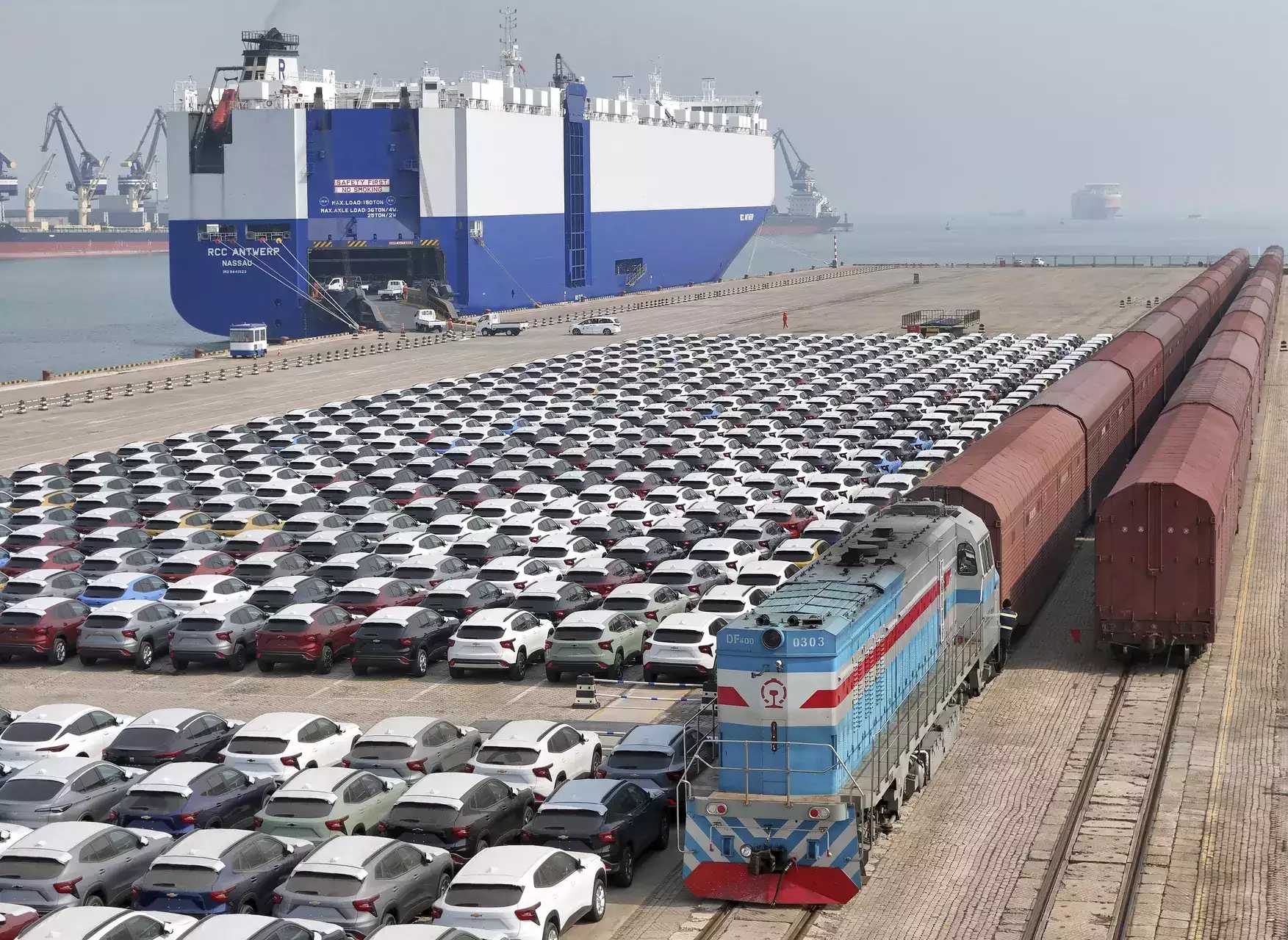India–US Trade Tensions Rise Over Steel and Auto Tariffs NMDC Limited reports a 38% drop in Q4 FY24 consolidated net profit RINL to Raise $23 Million Through Land Sales Amid Crisis

China's industrial exports are expanding faster than anyone predicted, threatening jobs around the world and sparking a growing backlash. From steel and automobiles to consumer electronics and solar panels, Chinese firms are finding more overseas buyers for their goods. China, which is going through a serious slump in what had been the economy's main driver of growth—building and equipping apartments, welcomes the world's appetite for its commodities. Other countries, meanwhile, are growing increasingly concerned that China's progress is coming at their expense and are beginning to take action.
The European Union declared last week that it was getting ready to impose import levies, or tariffs, on any electric vehicle coming from China. The European Union said it had discovered "substantial evidence" that Chinese government entities had illegally subsidised these exports, which China disputes.
The taxes will be applied to any electric vehicle supplied by China to the union from March 7; the exact amount will not be determined until the summer. During a December visit to Beijing, European leaders expressed concern that China is building many more factories than it needs to compensate for its housing crisis.
According to the UN Industrial Development Organisation, China already produces one-third of the world's manufactured goods, more than the United States, Germany, Japan, and South Korea combined.
Additionally, import limitations on Chinese solar panels and wind turbines have been considered by the European Union. India declared in September that it will apply sweeping tariffs to Chinese steel imports. Turkey has been protesting that China is buying very little and exporting disproportionately. The Biden administration has placed an increasing number of limitations on US high-tech exports, while also maintaining the tariffs put in place by previous President Donald Trump.
China's exports measured dollars increased 7% in January and February compared to the previous year. However, due to a glut of output in China, many Chinese products are seeing a decline in price, which means that export volume and worldwide market share are increasing much more quickly.
China has managed to get around some levies. China is exporting more and more components to nations like Vietnam, Malaysia, and Mexico. These countries process the commodities to be counted as their own products rather than created in China. These nations then export the items to the EU and the US, where they are subject to zero or very low tariffs. European leaders are considering raising taxes on Chinese solar and wind energy equipment.
In addition to looming tariffs on imported renewable energy items, Europe will soon impose a charge on imports worldwide based on the amount of climate-changing carbon dioxide released during manufacturing.
The carbon border adjustment mechanism, or CBAM, is the name given to the new tax. However, because it will significantly impact imports that originate directly or indirectly from China, it has been dubbed the "C-bomb" in Europe. Since extremely polluting coal accounts for two-thirds of China's electrical generation, many of its exports to Europe may be subject to the new levy.
China challenges the United States and Europe's long-standing economic ties in emerging nations as these nations increasingly opt for less expensive Chinese products. Across much Latin America and Africa, countries now buy more from China than nearby industrial democracies, and the United States and Europe can do little about it.
For their part, Chinese officials expressed concern during the annual session of the country's legislature, which ended Monday, about what they perceive as a wave of unfair protectionism. Commerce Minister Wang Wentao cited a recent International Monetary Fund study that found the number of trade restrictions around the world had nearly tripled in the past four years, many of them aimed at China.
Foreign trade officials and economists generally cite three aspects of China's industrial policy that help exports: state banks give low-interest loans for factories, cities transfer public land for factory construction at little or no cost, and the state electricity grid keeps prices low.
China's export explosion is visible in its trade surplus in manufactured goods, the largest the world has seen since World War II. Those surpluses correspond to other countries' deficits, which can drag on their growth. The widening surplus is not only about rising exports. Over the past two decades, China has reduced or stopped buying many manufactured goods from the West as part of national security and economic development measures.
Also Read : China tells US will 'never compromise' on Taiwan China coal industry doesn't expect imports to rise this year